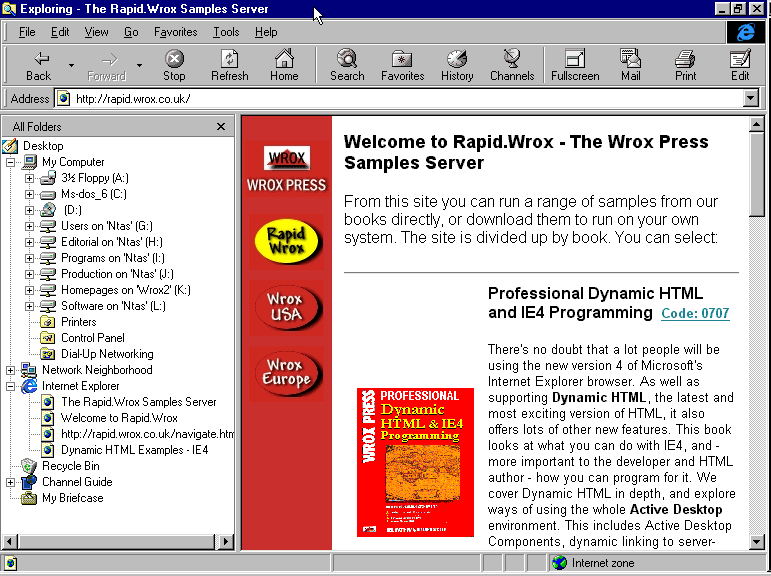
The great leap forward in Internet Explorer 3.0 was that, in addition to handling standard HTML documents, the ActiveX technologies enabled IE to be a universal client capable of handling a broad variety of document types. This provided the first step in Microsoft's direction to move towards a document centric computing environment (as opposed to the traditional application centric approach).
IE3 still left a gap in their aim of seamless browsing of resources across the desktop, the LAN and the Internet. At this time, we accessed local and LAN resources with the Windows Explorer and Internet resources with the Internet Explorer. The basis of the next release of Microsoft IE was to address this goal by integrating their browser technologies with the operating system and Windows shell to provide a single view of all resources irrespective of where they were located.

Originally targeted for a later IE5 release was the implementation of Dynamic HTML, the W3C extensions to standard HTML to allow complete control over the complete page to provide totally interactive applications. However, the decision was made for the IE4 release to be delayed and to include this important functionality.
IE4 will provide the user interface for the next generation of the windows operating systems – Windows NT 5.0 and Windows 98. We'll now take a brief look at the significant features of IE4.